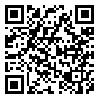Underground dams are structures built in underground and are capable of saving and making the underground water available. In this research, by using the SWOT analysis model, suitable locations were investigated for the development of an underground dam in the Keriyan area of Hormozgan province. At first, the necessary data and information were provided by visiting the region and presenting a questionnaire to the residents of the area and experts to investigate the strengths, weaknesses, opportunities and threats in the region for the underground dams. In the final step, by using the SWOT model and QSPM matrix, a comprehensive and appropriate strategy for underground dams was determined. The results showed that among the internal factors, not decreasing the volume of the reservoir due to deposits and reducing the evaporation from the reservoir with a final value of 0.85 and 0.66, and among the external factors, the willingness and cooperation of the relevant organizations and the disruption of downstream water rights with a final value of 0.68 and 0.66 had the greatest impact on selecting the strategy. Based on the results related to the internal and external factors, the strategy was placed in the maximum-maximum quadrant; in line with the strategy, by using the strengths and opportunities, the weaknesses should be overcome and the threats should be tackled. Some strategies were presented. In order to prioritize these strategies, the quantitative matrix QSPM was used. Finally, the hydrological, economic, social and environmental evaluating strategies of underground dams, before and after the construction, with a final score of 19.3 were prioritized.
Received: 2016/09/12 | Accepted: 2017/05/7 | Published: 2018/06/15
| Rights and permissions | |
 | This work is licensed under a Creative Commons Attribution-NonCommercial 4.0 International License. |




